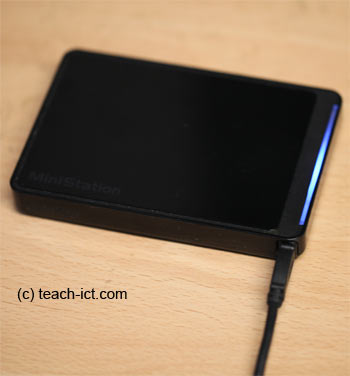4. External Storage Devices
This takes the form of a stand-alone device that is separate from the computer. External drives are connected to the computer with a cable plugged into a suitable interface such as an USB port. Data then passes back and forth across the interface.

Once an external drive is attached to the system, it appears as an extra drive letter in the folder tree, for example, E drive or K drive. The user can transfer files in the usual way by using the drag and drop method.
The main advantage of external drives is that they are portable and so data is easily moved from one location to another. External drives also allow safe backup of internally stored data.
The main disadvantage compared to an internal drive is data transfer is slower and they also take up space around the computer. Constant plugging in and out can also physically wear out the port over time.
External storage takes many forms, for example:
- portable hard disks
- magnetic tape
- memory stick / flash drive
- solid state memory cards
- DVD or CDs
Each type of external storage has to have the correct interface on the computer in order to connect.
Challenge see if you can find out one extra fact on this topic that we haven't already told you
Click on this link: External Storage Device
